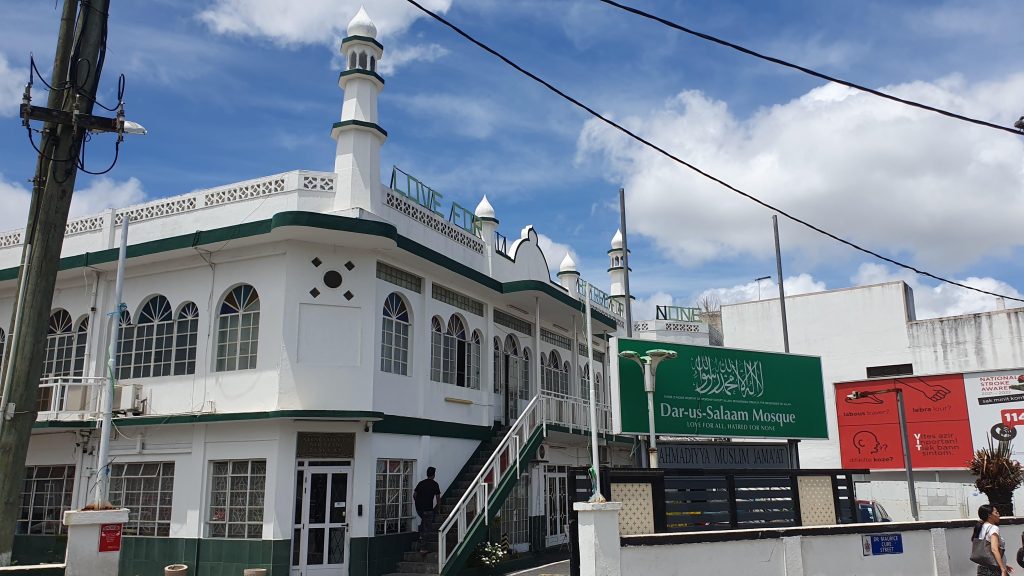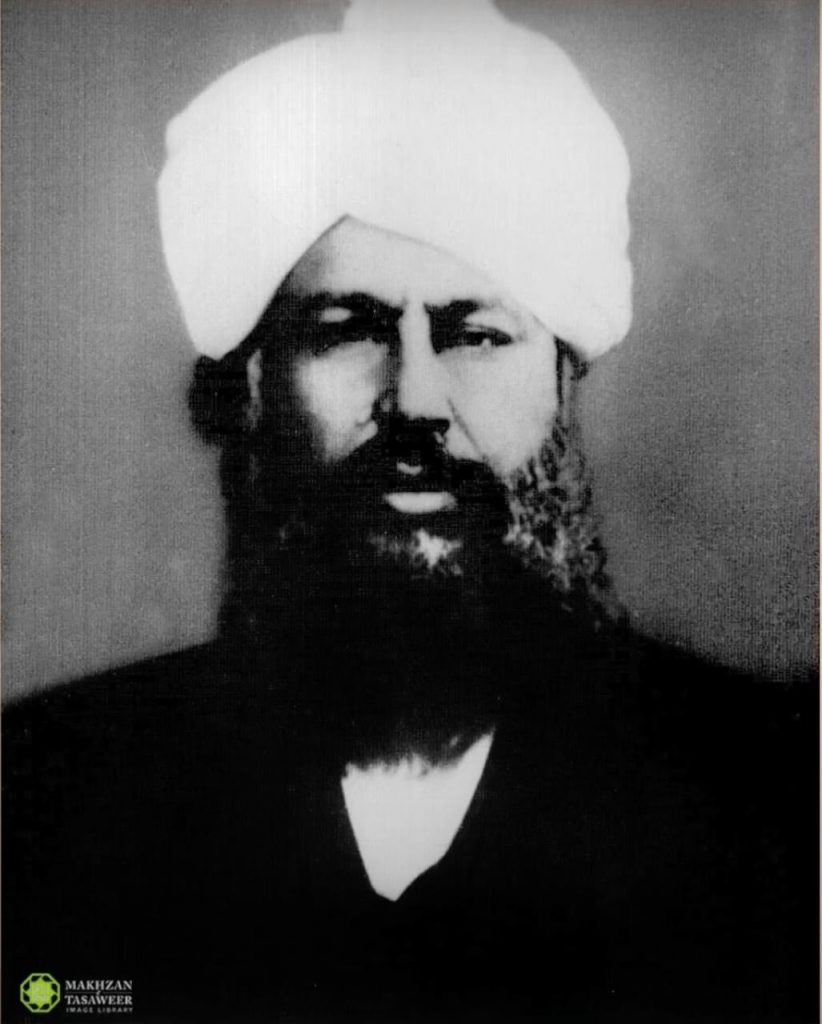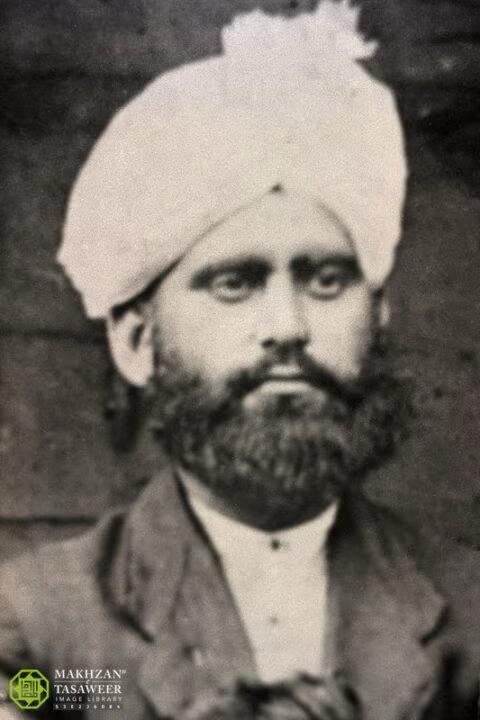
The roots of Ahmadiyyat in Mauritius trace back to 1907 when a man named Noormamode Nooraya established a group called La Fraternité Musulmane. This group, dedicated to religious discourse, published a magazine titled Islamisme, which they exchanged with similar publications worldwide. Through this exchange, they encountered the Review of Religions, a magazine from Qadian, India. Captivated by its content, they subscribed to it and began republishing its excerpts in Islamisme. Over the course of six years, they diligently studied the teachings of the Promised Messiah (peace be upon him).
In 1914, Noormamode Nooraya wrote to the First Khalifa, Hazrat Hakeem Maulvi Noor-ud-Deen (may Allah be pleased with him), declaring his acceptance of Ahmadiyyat. This marked the beginning of the Ahmadiyya Muslim Community in Mauritius, fulfilling the divine prophecy revealed to the Promised Messiah (peace be upon him), “I will cause thy message to reach the corners of the Earth.” Fittingly, Mauritius is home to a location called Bout du Monde (End of the World), symbolizing the prophecy’s fulfillment. Hazrat Khalifatul-Masih IV (may Allah have mercy on him) and Hazrat Khalifatul-Masih V (may Allah be his Helper) both visited this symbolic location during their travels to Mauritius.
During World War I in 1915, British Indian soldiers were stationed in Mauritius, including several Ahmadi Muslims. They attended prayers at a mosque in Phoenix, where one of them encountered the brother of a close associate of Nooraya Sahib. This meeting led to discussions about the Ahmadiyya Movement. Eventually, a gathering was held in Rose Hill—the present-day headquarters of the Ahmadiyya Jamaat in Mauritius—where the soldiers recommended reaching out to the Khalifa for a missionary. Responding to their earnest appeal, Hazrat Khalifatul-Masih II (may Allah be pleased with him) appointed Hazrat Sufi Ghulam Muhammad BA (may Allah be pleased with him) as the first Ahmadi missionary to Mauritius.

Hazrat Sufi Ghulam Muhammad Sahib (may Allah be pleased with him) arrived in Mauritius on June 15, 1915, and was met with fierce opposition. Opponents collected funds to bring anti-Ahmadi clerics to counter his teachings and even attempted to have him deported. However, Sufi Sahib managed to obtain authorization to remain on the island.
The day after his arrival, he delivered his first sermon at a member’s home, and that very night, he took the first pledges of allegiance (bai’ats). He actively engaged in public debates and private discussions in Rose Hill and Phoenix, gradually attracting individuals to Ahmadiyyat. Recognizing the importance of structured organization, he formed the first official Ahmadiyya Jamaat committee in Mauritius, appointing Nooraya Sahib as its Secretary-General. Under his guidance, members pledged allegiance to Khilafat and committed themselves to the Jamaat’s financial system. His eloquence and leadership allowed the community to grow despite significant resistance.
At the time, the Community did not have its own mosque and used the Rose Hill Mosque for prayers. Sufi Sahib led prayers separately from the non-Ahmadi imam, which sparked controversy. His melodious recitation of the Holy Qur’an attracted many non-Ahmadis, further intensifying tensions.
In 1917, a legal case was filed against the Jamaat, disputing their right to congregate and pray separately within the mosque. The case, which lasted from 1917 to 1920, became one of the most closely followed legal battles in Mauritius. The court ultimately ruled that while Ahmadis could pray individually in the mosque, they were not permitted to hold separate congregational prayers. However, the judges reaffirmed the Muslim identity of Ahmadis, a fact that opponents sought to deny. This verdict underscored the Jamaat’s resilience in upholding their faith despite external challenges.
The legal battle highlighted the need for a dedicated mosque. Under the leadership of Hazrat Sufi Ghulam Muhammad Sahib (may Allah be pleased with him), the Jama’at acquired land in Rose Hill. Though financial resources were limited, the Community exhibited extraordinary generosity. The first donation of 200 rupees by Mr. Sadarally inspired others to contribute, leading to the construction of a simple wooden mosque named Darus Salaam (Abode of Peace).
As the community grew, the mosque was expanded under Sufi Sahib’s guidance. In 1961, it underwent a full reconstruction. Members of the Jama’at once again made significant sacrifices, contributing their wealth, time, and skills. Today, Darus Salaam stands as a historic symbol of the perseverance and faith of Mauritius’ early Ahmadis. The mosque recently celebrated its centenary, marking a century of devotion and sacrifice.
Following the foundational efforts of Sufi Sahib, Hazrat Hafiz Obaidullah Sahib (may Allah be pleased with him) arrived in Mauritius to continue the mission. Despite financial constraints, he worked tirelessly to strengthen the Jamaat. Unfortunately, he passed away at the young age of 32 in 1923, leaving the community in deep mourning. Hazrat Musleh-e-Mau’ud (may Allah be pleased with him) praised his efforts, referring to him as a martyr who served with unwavering dedication.

Hafiz Sahib focused not only on tabligh but also on the moral and spiritual development of the community. His son, Bashiruddin Obaidullah Sahib, later returned to Mauritius as a missionary in 1951, continuing his father’s legacy.
Despite enduring opposition and social boycotts, the Jamaat in Mauritius continued to grow. By 1920, branches had been established in Triolet and Montagne Blanche, further extending the reach of Ahmadiyyat. Converts faced alienation from their families and communities, yet remained steadfast in their faith.
Today, by the grace of Allah, the Ahmadiyya Muslim Jamaat in Mauritius has expanded to include over 20 mosques. This remarkable progress is a testament to the sacrifices and dedication of its early pioneers.
During his visit to Mauritius in 2005, Hazrat Khalifatul-Masih V (may Allah be his Helper) reflected on the sacrifices of the early Ahmadis in a Friday Sermon:
“Despite the challenging circumstances and countless difficulties, these individuals planted the seeds of Ahmadiyyat here and did everything possible to help it grow. Opposition and persecution did not discourage them. On the contrary, they remained steadfast in submission to the will of Allah, constantly seeking His help and support. In fact, these people initially came here in pursuit of material gain, but they ultimately abandoned everything so that religion could take precedence over worldly matters. This is the exceptional lesson and example that your grandparents, these first Ahmadis, have left for you.”
The early history of Ahmadiyyat in Mauritius is a testament to the power of faith, sacrifice, and divine support. From humble beginnings to a thriving community, the Jama’at overcame adversity with resilience and devotion. Now it is our mission to honor the legacy of our forefathers and continue spreading the message of Islam Ahmadiyyat to every corner of the world.
